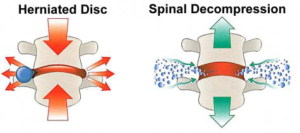 A long day’s work can wear even the liveliest of characters out. Phases of fatigue may come and go, sometimes being cured by a night dedicated to good rest or a day of relaxation, but in some cases, the chronic aches and pains of everyday life become a problem. Muscle pain, joint aches, and the tingling sensations can be enough to send us off of the deep end for weeks on end. Pain relief medication, as many of us know, only does so much to alleviate the discomfort for a couple of hours at a time – and never really gets to the root cause of the symptoms. And what happens when deep sleep, stretching regimens, and even ibuprofen aren’t enough to keep us feeling good?
A long day’s work can wear even the liveliest of characters out. Phases of fatigue may come and go, sometimes being cured by a night dedicated to good rest or a day of relaxation, but in some cases, the chronic aches and pains of everyday life become a problem. Muscle pain, joint aches, and the tingling sensations can be enough to send us off of the deep end for weeks on end. Pain relief medication, as many of us know, only does so much to alleviate the discomfort for a couple of hours at a time – and never really gets to the root cause of the symptoms. And what happens when deep sleep, stretching regimens, and even ibuprofen aren’t enough to keep us feeling good?
1. Neck or Lower back pain
2. Pain referring down your leg or arm
3. Tingling or numbness in your limbs
4. Neck or Low back Arthritis
5. Weakness in your arm or leg muscles
6. Cervical or Lumbar disc herniation
7. Muscle spasms
Many of those suffering from the symptoms listed above have found relief in decompression therapy. Decompression therapy involves the use of a computerized table with the goal of stretching the spine by distraction helping to create space and relieve stress on the joints, nerves, and discs of the spine. This method is nonsurgical and is meant to create a negative intradiscal pressure to promote retraction/repositioning of the herniated or bulging disc. Studies also show that applying lower pressure in the disc will cause an influx of healing nutrients and other substances through the disc. Spinal decompression therapies range from the face-up – supine position – to face down – prone position, both methods focusing on decompressing the spine without causing pain to the patient.
Decompression therapy can be different for each individual depending on what the reason for treatment is. Some patients see results in as little as a few visits where those with more severe or chronic problems will need more treatment. It is common for this treatment option to be applied in conjunction with other treatment methods such as chiropractic care, strengthening and stretching exercise therapy, therapeutic massage along with others to achieve optimal results the fastest. Although pain relief is the optimal goal for spinal treatment, the lack of pain following treatment does not always indicate a full recovery.
Symptoms can come from many different problems and locations with in the body. Treatments vary, and that’s why it’s important to talk with your doctor about your symptoms and problems so that you may be better informed about the causes of your symptoms and the best treatment options for you.


